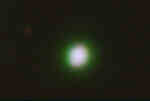| Warner and Swasey Observatory |
| Case Western Reserve University | Nassau Station |
| Visitors |
|
» Home » News » Gallery » Reference » Weather |
| Science Resources |
|
» NSRT User Interface » Software » Data Archive » Download Data |

|
 |
Nassau Station Robotic Telescope
Image Gallery
This is a collection of images of planetary nebulae taken by the NSRT that was inspired by the Hubble Space Telescope collection of images of planetary nebulae. We don't have the resolution of the Hubble Telescope because of atmospheric seeing but the images here are closer to what you'd be able to see with your own eye with a telescope in your backyard. The algorithm used to put together our color composite images is closer to the way your eye senses light and color because we are using broader band filters. Also, in the NSRT images north is always up and east is always right. The HST images can be rotated to just about any angle so you may have to turn them to match them up with the NSRT image.
Planetary nebula were originally called "planetary" because astronomers once though that we were seeing a solar system forming around a star. Spectra of these objects showed that instead of collapsing into a planetary system, these nebula are blowing apart and the star in the center is not a young star but a white dwarf. We know that white dwarfs are the result when a star about the size of the sun dies. We are still uncertain about exactly how planetary nebula form but they are the result of the final death throws of a low mass star. Essentially what we are seeing in the nebula are the outer layers of the star having been "thrown" or "puffed" off, leaving behind the white dwarf cinder. It is also important to note that all these nebula are much much larger than the size of our own solar system and since they are expanding outward and cooling, they probably only last a few million years before fading.
When you look at these with binoculars or a telescope with your eye, you will see small fuzzy objects, maybe with a bit of a green tinge to them. The green tinge is due to the fact that your eye is most sensitive to this color and a large amount of the light energy being emitted in the nebula is due to a strong ionized oxygen line. A large fraction of the light energy is also emitted in the red due to ionized hydrogen but your eye is less sensitive to that color. That does show up better in color pictures though. The color pictures here are what your eye would see if there was enough light to see colors like you do under daylight conditions.
Click on a thumbnail to get the full sized picture.
Image Gallery Index
Image Gallery Index
©2000 CWRU Astronomy Dept.
comments
Last modified November 6, 2000
Case Western Reserve University

























